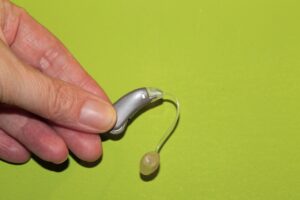Breaking Taboos: Let’s Talk Openly About Condom Catheters and Quality of Life – In a world where certain topics are still considered taboo, it’s essential to break down barriers and have open conversations about issues that impact individuals’ quality of life. One such topic is urinary incontinence and the use of condom catheters as a solution. Despite the discomfort or embarrassment it may cause, discussing these matters openly is crucial for raising awareness, promoting understanding, and ultimately improving the lives of those affected.

Understanding Urinary Incontinence
Urinary incontinence is a common condition characterized by the involuntary loss of urine. It can affect people of all ages and genders, with various underlying causes such as aging, medical conditions, or neurological disorders. The impact of urinary incontinence extends beyond the physical discomfort, often leading to emotional distress, social isolation, and a decreased quality of life.
What are Condom Catheters?
Condom catheters are medical devices designed to manage urinary incontinence in men. Unlike traditional catheters inserted into the bladder, condom catheters are externally worn and secured around the penis. They collect urine in a bag attached to the leg, providing a discreet and comfortable solution for managing incontinence.
Breaking Taboos: Addressing Stigma
Despite the prevalence of urinary incontinence, societal attitudes often contribute to the stigma surrounding the condition. Many individuals feel embarrassed or ashamed to discuss their symptoms openly, leading to isolation and a reluctance to seek help. By challenging these taboos and fostering open dialogue, we can create a more supportive environment for those affected by urinary incontinence.
Benefits of Condom Catheters
Condom catheters offer numerous benefits for individuals dealing with urinary incontinence. They provide a convenient and discreet way to manage bladder leakage, allowing users to maintain their dignity and independence. Unlike traditional catheters, condom catheters are non-invasive and comfortable to wear, enhancing overall quality of life.
Challenges and Misconceptions
Despite their advantages, condom catheters may face misconceptions and challenges. Some individuals may worry about leakage or skin irritation, while others may be unaware of the available options. By addressing common concerns and dispelling myths, we can help individuals make informed decisions about their urinary health.
Choosing the Right Condom Catheter
When selecting a condom catheter, it’s essential to consider factors such as size, material, and adhesive strength. With a variety of options available, individuals can find a catheter that suits their unique needs and preferences. Consulting with a healthcare professional can also provide valuable guidance in choosing the right product.
Tips for Proper Usage
Proper hygiene and maintenance are crucial for maximizing the effectiveness of condom catheters and preventing complications. Regular skin care, secure attachment, and proper disposal of used catheters can help minimize the risk of infection and discomfort. Healthcare providers can offer valuable advice on catheter care and usage.
Support and Resources
Seeking support from healthcare professionals and support groups can make a significant difference in managing urinary incontinence. These resources provide valuable information, emotional support, and practical tips for coping with the condition. By reaching out for help, individuals can feel empowered and supported on their journey to better bladder health.
Real-Life Stories
Personal experiences with condom catheters highlight the positive impact they can have on individuals’ lives. By sharing stories of overcoming challenges and stigma, we can inspire others to seek help and embrace effective solutions for managing urinary incontinence. These narratives foster empathy and understanding, reducing the sense of isolation often associated with incontinence.
Impact on Quality of Life
The use of condom catheters can significantly improve the quality of life for individuals with urinary incontinence. By providing a reliable and discreet means of managing bladder leakage, condom catheters restore confidence and independence. With proper support and resources, individuals can lead fulfilling lives without letting incontinence hold them back.
The Role of Healthcare Professionals
Healthcare professionals play a crucial role in supporting individuals with urinary incontinence. By offering comprehensive evaluations, personalized treatment plans, and ongoing guidance, they empower patients to take control of their bladder health. Collaboration between patients and healthcare providers is key to achieving optimal outcomes and improving overall well-being.
Breaking the Silence: Advocacy and Awareness
Advocacy efforts and awareness campaigns are essential for breaking the silence surrounding urinary incontinence. By promoting open dialogue, challenging stigma, and advocating for better access to resources and support, we can create a more inclusive and supportive society for all individuals affected by incontinence. Together, we can break down barriers and improve the lives of millions worldwide.
Future Trends and Innovations
Advances in catheter technology hold promise for further improving the quality of life for individuals with urinary incontinence. Innovations such as improved materials, enhanced comfort features, and remote monitoring capabilities offer exciting possibilities for enhancing bladder management and reducing the burden of incontinence. By staying informed and embracing innovation, we can continue to support those affected by urinary incontinence and promote better bladder health for all.
Conclusion
Breaking taboos and discussing topics like urinary incontinence and condom catheters openly is essential for improving quality of life and reducing stigma. By fostering empathy, understanding, and support, we can empower individuals to seek help and embrace effective solutions for managing incontinence. Together, let’s break down barriers and create a more inclusive and supportive society for all.
FAQs
- Are condom catheters suitable for all individuals with urinary incontinence?
- Condom catheters may be suitable for many individuals with urinary incontinence, but it’s essential to consult with a healthcare professional to determine the best treatment approach.
- How do I know which type of condom catheter is right for me?
- Choosing the right condom catheter involves considering factors such as size, material, and adhesive strength. Your healthcare provider can offer personalized recommendations based on your needs.
- Are there any risks associated with using condom catheters?
- While condom catheters are generally safe when used correctly, there is a risk of skin irritation or infection if proper hygiene is not maintained. It’s essential to follow recommended guidelines for catheter care and usage.
- Can condom catheters be used overnight? Many individuals find that condom catheters provide effective overnight protection, but it’s important to ensure a secure fit and proper drainage to prevent leakage and discomfort.
- Are there alternatives to condom catheters for managing urinary incontinence?
- Yes, there are various alternatives available, including absorbent pads, indwelling catheters, and pelvic floor exercises. Your healthcare provider can help you explore the options and choose the best solution for your needs.




